Flushing Cannabis: What You Need To Know

Even if you're completely new to cannabis cultivation, you've likely heard of flushing—cutting a plant's nutrients and washing its root zone with plain water or a specialised flushing solution. Below, we'll cover all the aspects of flushing cannabis, what it does, when to do it, when to avoid it, and much more.
Flushing cannabis is a procedure most growers swear by as a way to elevate the quality of their bud. By slowly stripping their plants of nutrients close to harvest, growers swear they end up with flower that tastes better, smells stronger, and smokes smoother. In this article, we'll take an in-depth look at flushing cannabis, how it works, and how to do it both in soil and soilless setups.
Why flush cannabis plants?
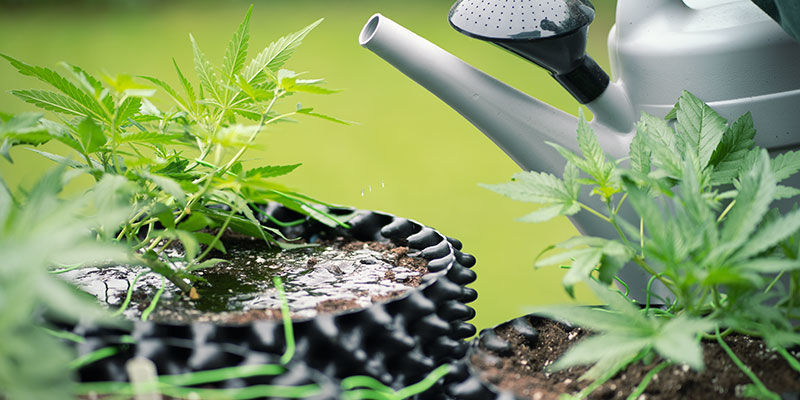
Flushing is an important technique all cannabis growers need to be familiar with. It involves cutting a plant's nutrients and drenching its roots with water or a special flushing solution, and serves a number of purposes. Flushing before harvest, for example, can help produce a smoother, clearer smoke. In the face of a nutrient imbalance, on the other hand, flushing can help treat underlying causes of nutrient issues such as lockout or pH issues and help you get your grow back on track ASAP. Sometimes, flushing can also help smooth the transition from veg to bloom, especially when growing strains that are sensitive to nutrient changes or have been in veg for prolonged periods of time.
When to flush cannabis plants
Different growers choose to flush their plants at different times and in different ways. As you get more harvests under your belt, you'll start developing your own preferences regarding how and when to flush your plants. Below, however, we'll cover 4 classic scenarios where you might consider flushing:
When switching from veg to bloom (optional)
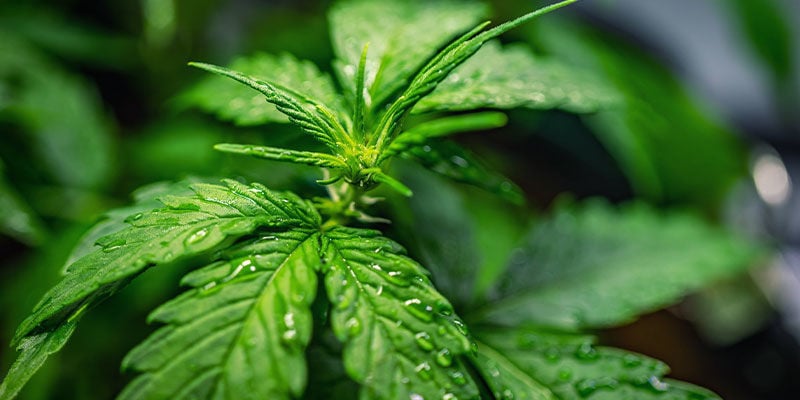
The cannabis lifecycle can be broadly divided into two separate stages; the vegetative phase and the bloom phase. Cannabis plants need different nutrients during these distinct stages; during veg, plants need higher concentrations of nitrogen (N) to fuel the growth of healthy new foliage and promote photosynthesis. During bloom, however, cannabis plants stop growing foliage and instead focus all of their energy on developing large flowers in hope of reproducing. In turn, flowering cannabis plants need higher concentrations of phosphorous (P) and potassium (K), which help encourage healthy plant structure and, more importantly, contribute to the production of large flowers strong aromas, flavours, and colours.
When switching from veg to bloom, some growers like to lightly flush their plants. While this is optional and not strictly necessary, it can help make the transition from veg to bloom fertilisers smoother. Moreover, it can also help eliminate the risk of chemical interactions between different fertilisers, which can cause salt buildup and nutrient lockout.
Post feeding
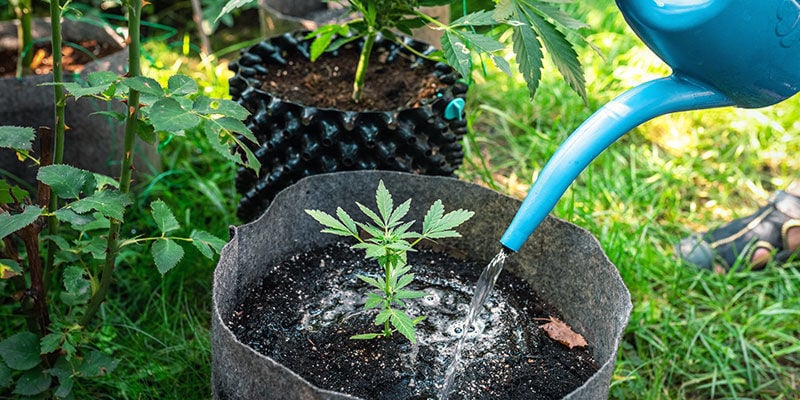
Inexperienced cannabis growers often fall into the trap of thinking that the more they fertilise their plants, the bigger and better their harvest will be. However, using chemical fertilisers to feed your plants is all about balance. In excess, chemical fertilisers can cause salt build-up in a plant's medium, affecting its ability to take up nutrients. This is known as nutrient lockout, which we'll explore in more detail below.
In order to prevent the build-up of salts in their growing medium, many growers choose to regularly flush their plants after they feed them. For example, some growers like to flush their plants 1–2 days after fertilising to help remove excess nutrients from their medium and in turn minimise the risk of nutrient lockout.
To treat nutrient lockout
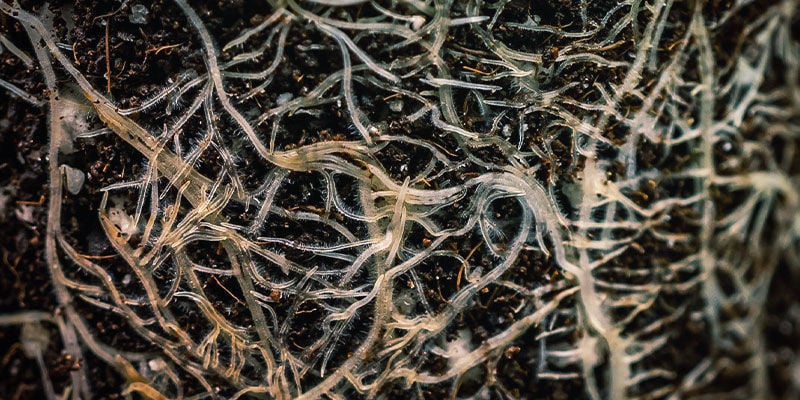
Nutrient lockout is a fairly common problem that can affect both inexperienced and veteran growers alike and is most often caused by salt buildups in a plant's soil (which can be caused by chemical reactions between a plant's roots, its growing medium, and your fertiliser), overfeeding, or improper pH. When plants suffer from a nutrient lockout, they are essentially unable to take up nutrients and may develop a myriad of symptoms, including:
- Stunted growth
- Limp and tireless leaves
- Burnt leaf tips
- Signs of a particular nutrient deficiency
When you've diagnosed a case of a nutrient lockout in your plants, flushing can help you correct and rectify the situation relatively quickly. Most growers will flush their plants with specialised flushing solutions which work by trapping excess nutrients or salts so that they can be flushed from the medium with water. Flushing with pH-regulated water can also work, though it is less effective in the case of nutrient lockout.
Pre-harvest flushing (also known as final flush)
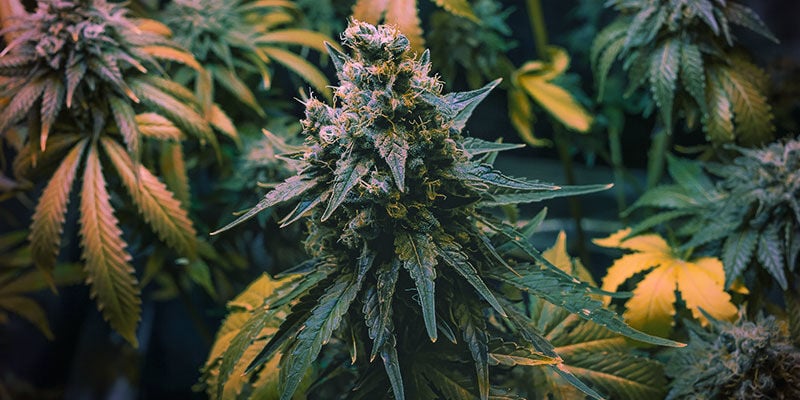
Arguably the most common time to flush cannabis plants is just before harvest. Sometimes called the "final flush," pre-harvest flushing is touted by some growers to produce a smoother, cleaner final product. While individual methods vary, most growers will flush their plants for 1–2 weeks prior to harvest. The argument here is that flushing removes excess nutrients from the plants' medium, forcing them to use up any nutrient stores they have built up over their lifetime, resulting in buds that taste better, burn better, and are smoother to smoke.
Note that the importance of final flushing is a highly debated topic among growers, with some arguing it isn't necessary. Some growers argue that flushing has no impact on a plant's feeding prior to harvest, and research has even shown that in blind taste tests, smokers prefer bud that hasn't been flushed pre-harvest (Herrington, 2019). In general, we find flushing isn't strictly necessary, given you haven't been heavily fertilising your plants during their bloom phase or if you've used organic nutrients throughout your entire grow.
How to flush cannabis plants
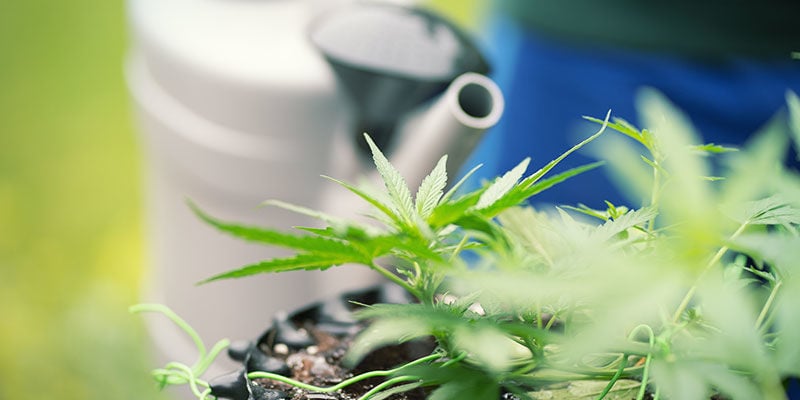
At it's core, flushing simply involves drenching a plant's medium with pH-regulated water. Below, however, we'll teach you how to flush cannabis plants in more detail both in soil and soil-less setups.
Soil / coco mediums
In order to effectively flush your plants in soil or coco, you'll want to water them with enough water to produce roughly 10–20% runoff from the bottom of their pots. To calculate this, simply divide the size of your pots by half; if you're growing in 25l pots, flush your plants with roughly 12.5l of water. If you're growing in 15l pots, flush with 7.5l. Other considerations when flushing cannabis plants in soil or coco include:
- In soil, flush your plants 7–10 days prior to harvest.
- In coco, flush your plants 7 days prior to harvest.
- When flushing to prevent or treat nutrient lockout in soil, wait 7–10 days before feeding again.
- When flushing to prevent or treat nutrient lockout in coco, wait 7 days before feeding again.
Hydroponic systems
There are 2 main ways to flush cannabis plants in hydro:
-
Using a gradual flush, in which you gradually dilute the water in your reservoir by adding clean, pH-regulated water to it over 7–14 days. Ideally, you'll want to measure the ppm of your reservoir and aim to land on 200–400ppm on harvest day.
-
Using a faster flush (3–7 days) to allow your plants to feed for longer during the final stages of flowering. In this approach, you'll want to use a flushing solution to help strip your reservoir and system of nutrients more quickly.
When to avoid flushing cannabis?
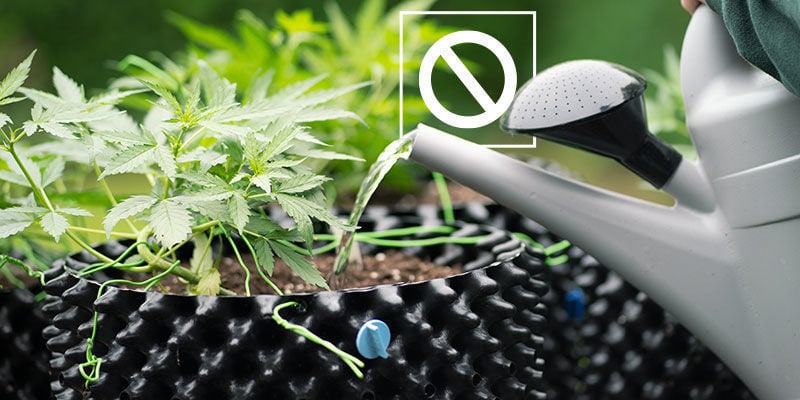
While flushing can be very beneficial in the situations we mentioned above, there are also times it can have a negative effect. Most notably, you'll want to avoid flushing your plants when growing organically or in amended super soil. Organic cannabis cultivation is all about creating a delicate soil ecosystem rich with microbial life forms and natural fertilisers. As your plants grow, this ecosystem will help turn the natural fertilisers in their soil into usable sources of energy, as well as keep them protected from pests and pathogens. Flushing, both with chemical flushing solutions or just plain water, can disturb this delicate ecosystem you've worked so hard to create, and affect your plants' abilities to feed and grow.
Flushing cannabis: A vital part of growing
While flushing is a highly debated topic among cannabis growers, it's generally a recommended process whenever you're growing cannabis with concentrated chemical fertilisers. Most growers agree that slowly weaning your plants off their nutrients before harvest can produce a better quality harvest, and it's also necessary when dealing with nutrient imbalances.












 United States
United States








